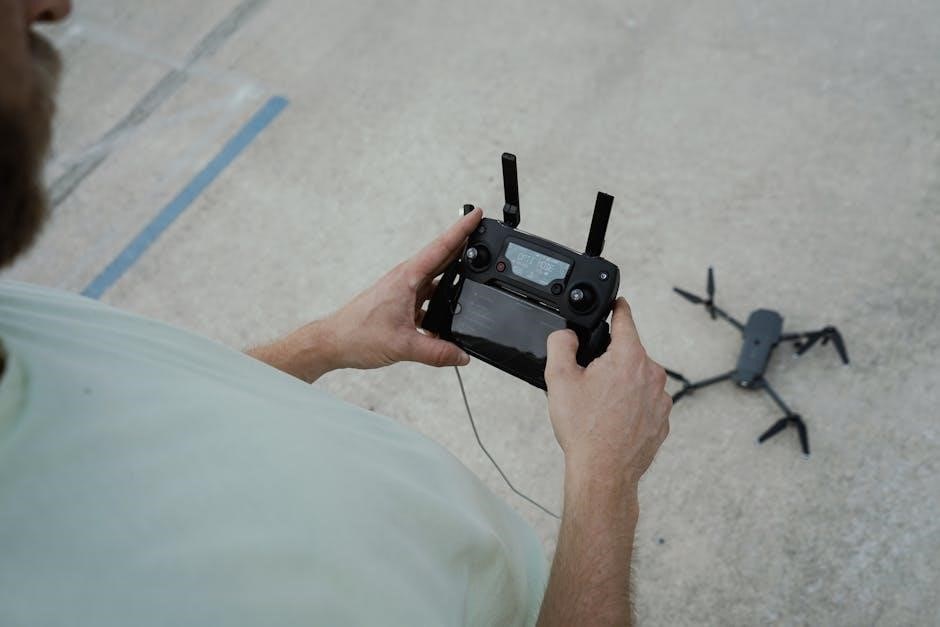Signal operating instructions provide technical control and coordination of communications within a command using procedures and protocols effectively always.
Definition and Purpose
Signal operating instructions, also known as Communications-Electronics Operation Instructions, are a type of combat order issued for the technical control and coordination of communications within a command. They include current and up-to-date information covering radio operations, and are used to ensure effective communication between units. The purpose of signal operating instructions is to provide a standardized system for communication, allowing units to operate efficiently and effectively in a variety of situations. This includes outlining procedures for radio communication, including the use of operating signals, such as Q-signals and Z-signals. By providing a clear and standardized system for communication, signal operating instructions play a critical role in ensuring the success of military operations. They are an essential tool for military units, and are used in a variety of contexts, from tactical operations to strategic planning. Overall, signal operating instructions are a key component of military communication systems.
Importance of Signal Operating Instructions

Signal operating instructions are crucial for ensuring effective communication within military units. They provide a standardized system for communication, which is essential for successful operations. The importance of signal operating instructions lies in their ability to facilitate clear and concise communication, reducing the risk of errors and misinterpretation. By outlining procedures for radio communication, signal operating instructions help to prevent confusion and ensure that messages are conveyed accurately. This is particularly important in high-stress situations, where clear communication is critical to success. Additionally, signal operating instructions help to ensure that communication systems are used efficiently, maximizing their effectiveness and minimizing downtime. Overall, signal operating instructions play a vital role in supporting military operations, and their importance cannot be overstated. They are a key component of military communication systems, and their use is essential for achieving strategic objectives. Effective communication is critical to success.

Types of Signal Operating Instructions
Signal operating instructions include various types of codes and protocols using
standardized
communication methods always effectively online.
Operating Signals
Operating signals are a crucial component of signal operating instructions, used to expedite communications between operators. They consist of three-letter signals starting with the letter Q or the letter Z, conveying specific meanings and messages. These signals are used by CW operators and radio teletypewriter operators to facilitate efficient communication. The use of operating signals enables operators to quickly convey complex information, reducing the time and effort required for communication. This is particularly important in high-stress situations, where clear and rapid communication is essential. Operating signals are standardized, ensuring that all operators understand their meanings and can use them effectively. The standardization of operating signals also helps to reduce errors and miscommunications, which can have serious consequences in military and other high-stakes environments. By using operating signals, operators can ensure that their messages are conveyed quickly and accurately, allowing them to respond effectively to changing situations. Overall, operating signals play a vital role in signal operating instructions, enabling efficient and effective communication.
Q-Signals and Z-Signals
Q-signals and Z-signals are specific types of operating signals used in signal operating instructions. Q-signals are three-letter codes that start with the letter Q, while Z-signals start with the letter Z. These signals are used to convey specific information, such as requests for weather reports or messages regarding navigation. The use of Q-signals and Z-signals enables operators to quickly and efficiently communicate complex information, reducing the risk of errors or miscommunications. Each Q-signal and Z-signal has a unique meaning, which is standardized and understood by all operators. This standardization ensures that Q-signals and Z-signals can be used effectively in a variety of contexts, including military and civilian communications. By using Q-signals and Z-signals, operators can rapidly convey important information, allowing them to respond quickly to changing situations. The use of these signals is an important aspect of signal operating instructions, enabling efficient and effective communication in a range of environments. Overall, Q-signals and Z-signals play a critical role in facilitating clear and rapid communication.

Applications of Signal Operating Instructions
Signal operating instructions are used in various
contexts
for effective communication always.
Military Communications
Signal operating instructions play a crucial role in military communications, providing a standardized framework for transmitting and receiving critical information. The US military utilizes signal operating instructions to ensure seamless communication across different units and commands. These instructions outline procedures for radio communication, including call signs, authentication protocols, and message formatting. By following these guidelines, military personnel can effectively convey vital information, maintain situational awareness, and execute tactical operations. The use of signal operating instructions in military communications also enhances security, reducing the risk of interception or misinterpretation of sensitive information. Furthermore, these instructions facilitate coordination between different branches of the military, enabling joint operations and improving overall military effectiveness. The application of signal operating instructions in military communications is essential for achieving strategic objectives and ensuring national security. Effective communication is critical in military operations, and signal operating instructions provide a foundation for reliable and secure communication.
Tactical Operations
Signal operating instructions are essential for tactical operations, enabling military units to coordinate and execute complex maneuvers. These instructions provide a common language and set of procedures, allowing units to communicate effectively and respond to changing situations. In tactical operations, signal operating instructions facilitate the transmission of critical information, such as enemy positions, troop movements, and logistical support. The use of standardized signal operating instructions ensures that all units are aware of their roles and responsibilities, enabling them to work together seamlessly. By following these instructions, military personnel can rapidly respond to emerging threats and exploit opportunities, ultimately achieving their tactical objectives. The application of signal operating instructions in tactical operations enhances situational awareness, reduces friction, and increases the effectiveness of military units. Effective communication is critical in tactical operations, and signal operating instructions provide a foundation for reliable and secure communication, enabling military units to operate effectively in a rapidly changing environment.

Challenges and Limitations
Signal operating instructions face challenges with equipment obsolescence and security concerns affecting communication systems always using
procedures
effectively.
Obsolescence of Equipment
Signal operating instructions are affected by the obsolescence of equipment, which can render existing protocols and procedures ineffective. The military’s rapid pace of technological advancement means that equipment can become outdated quickly. As a result, signal operating instructions must be continually updated to reflect changes in equipment and technology. This can be a challenge, as it requires significant resources and effort to develop and implement new instructions. Furthermore, the use of obsolete equipment can compromise the security and effectiveness of communication systems. The internet provides a wealth of information on this topic, including discussions of the challenges posed by equipment obsolescence and the importance of staying up-to-date with the latest technology. By understanding the impact of obsolescence on signal operating instructions, individuals can better appreciate the complexities of military communications and the need for ongoing innovation and improvement. Effective management of equipment obsolescence is crucial.
Security Concerns
Signal operating instructions pose significant security concerns, as they can be used to compromise the security of communication systems. The internet provides information on the potential risks associated with signal operating instructions, including the possibility of interception and exploitation by unauthorized parties. To mitigate these risks, signal operating instructions must be carefully managed and protected. This includes limiting access to authorized personnel and using secure communication protocols to prevent interception. Additionally, signal operating instructions should be regularly reviewed and updated to ensure they remain effective and secure. By prioritizing security, individuals can help protect sensitive information and prevent unauthorized access to communication systems. The importance of security cannot be overstated, and it is essential to take a proactive approach to managing signal operating instructions. Effective security measures can help prevent breaches and protect the integrity of communication systems, which is critical for maintaining national security and protecting sensitive information. Secure communication is essential.
